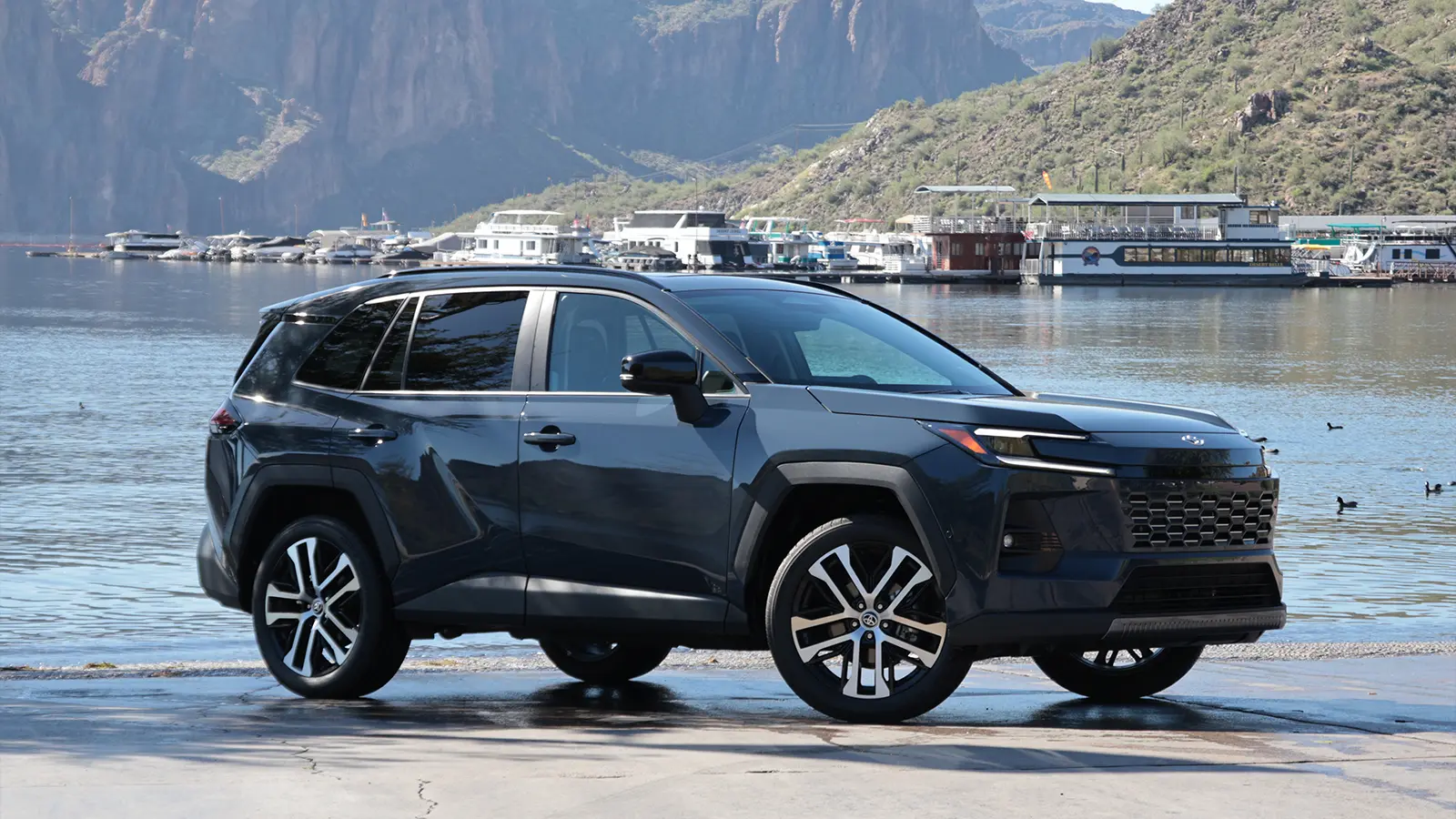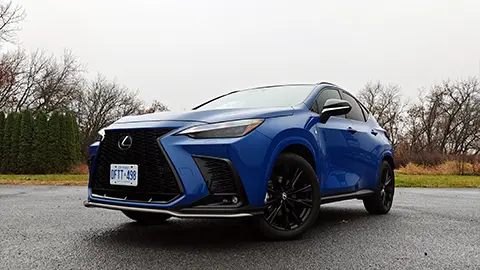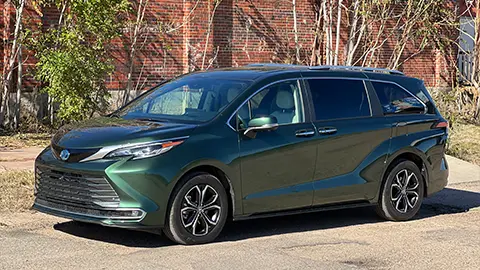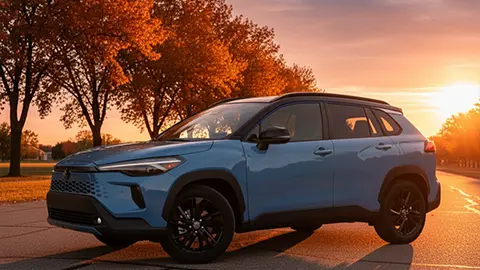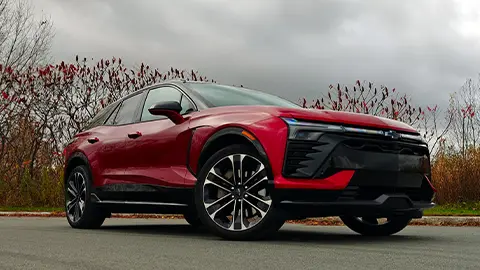⚡ Key Highlights – 2026 Toyota RAV4 Hybrid XLE
- 🔋 All-Hybrid Lineup: Every 2026 RAV4 is now hybrid or plug-in hybrid — no gas-only models
- ⚙️ Power & Efficiency: 2.5L hybrid with up to 236 horsepower and improved smoothness
- 🖥️ Smarter Tech: New 10.5-inch infotainment display with Toyota’s Arene software system
- 🛞 Refined Ride: Better chassis stiffness and quieter cabin make everyday driving calmer
- 🌱 Fuel Economy: Targeting around 39 EPA Esimated mpg combined, matching or beating last year’s model
- 💰 Price Range: Expected to start in the low $30,000s, arriving at dealers later this year
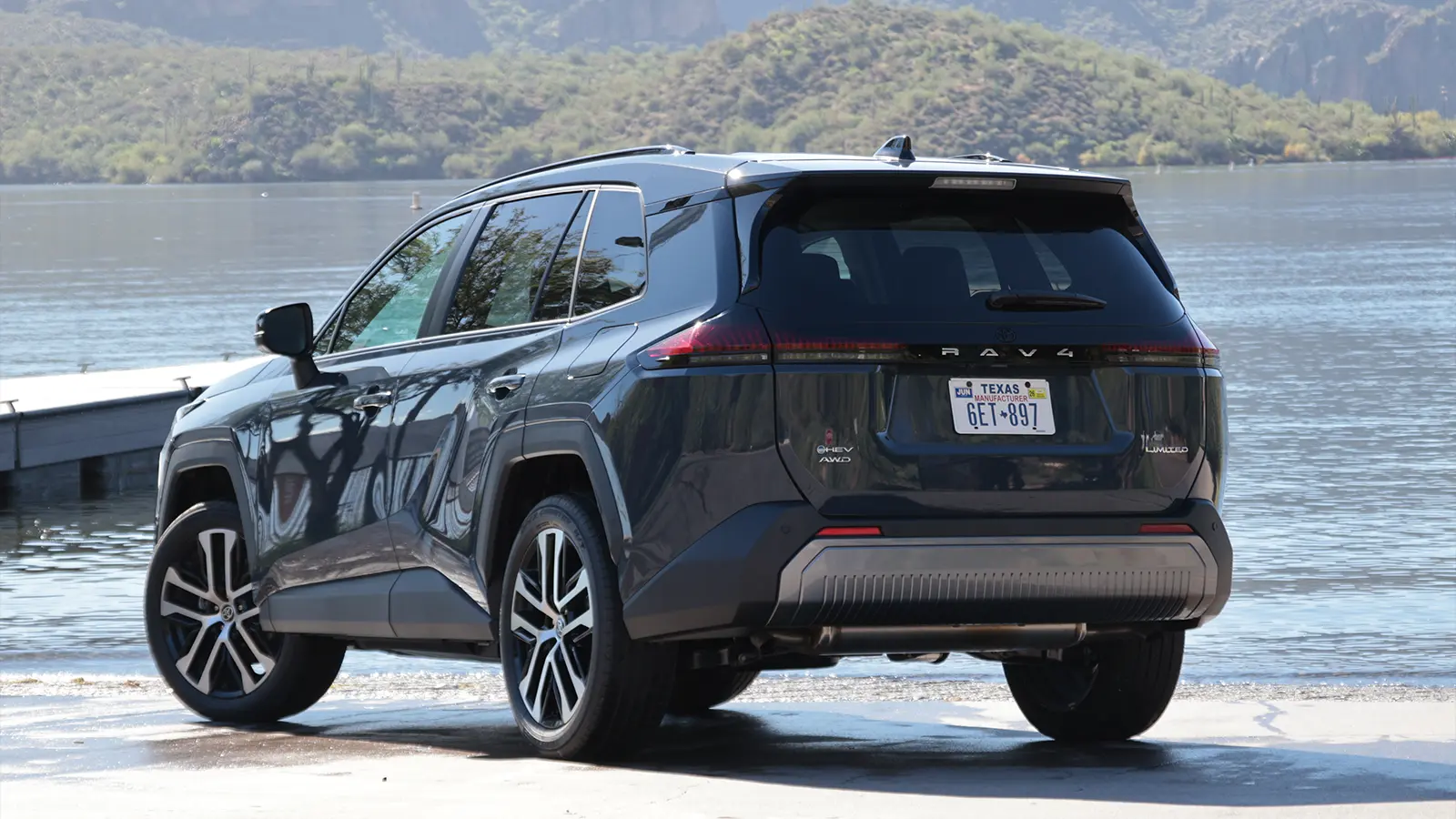
America’s Favorite SUV Gets a Smarter, Greener Makeover
For decades, Ford has bragged about the F-Series being the U.S.'s bestselling vehicle. But the F-Series includes everything from the F-150 to medium-duty F-600s. If you separate the trucks by nameplate, the Toyota RAV4 actually outsells the F-150 with over 475,000 examples sold in 2024. Compact crossovers are the biggest segment of the U.S. market, and the RAV4 leads the pack. So, when there's a new version, it's a big deal — and we just got to drive it.
Toyota has traditionally been a pretty conservative company, largely avoiding flights of fancy (apart from wonderful cars like the GR Corolla). While the auto industry poured billions into EVs over the last decade, Toyota hedged its bets by adding hybrid powertrain options to practically every vehicle it built. Last year, more than half of all RAV4s sold in America were hybrids or plug-in hybrids. For 2026, they're all hybridized.
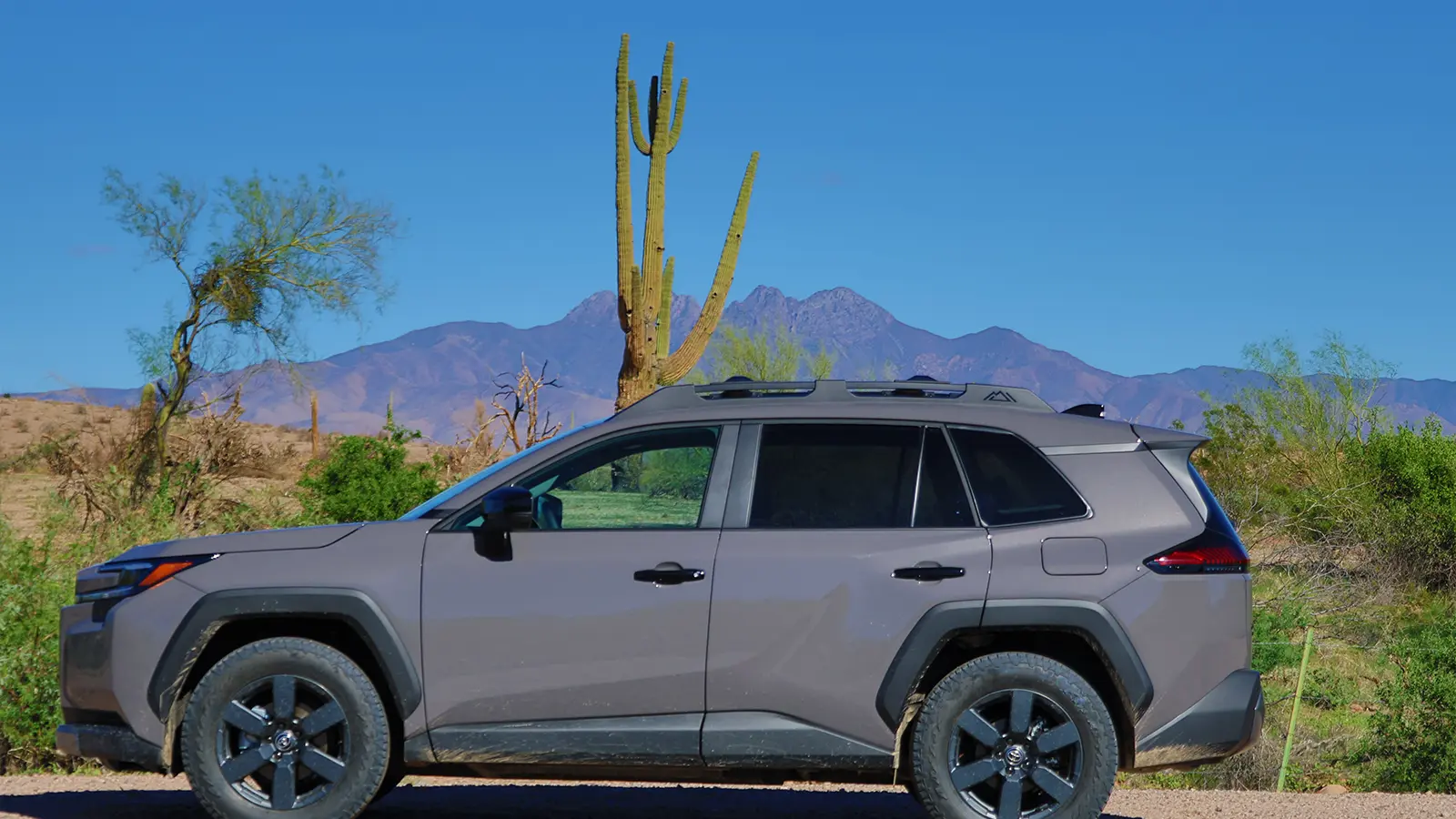
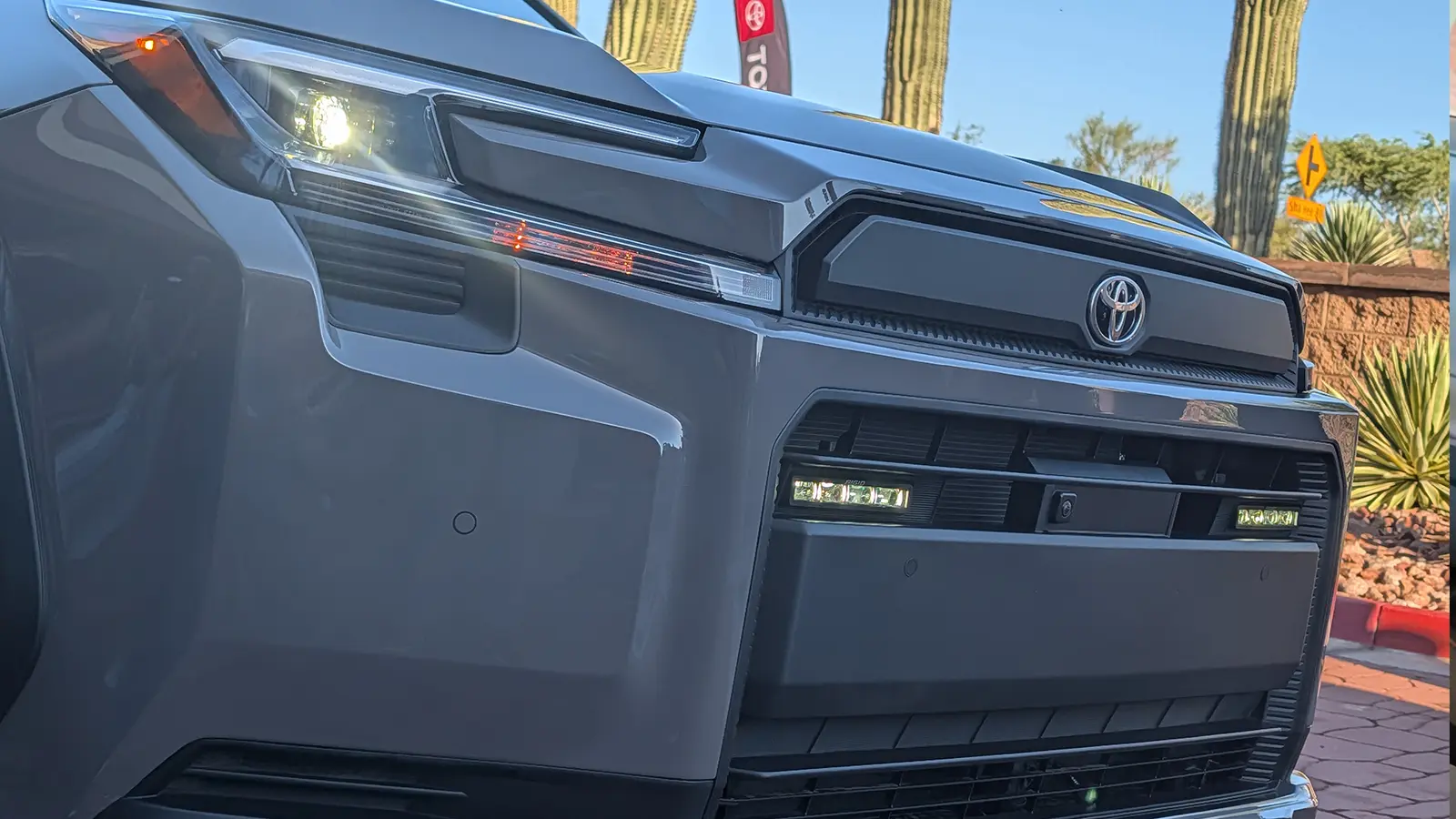
Same Size, Bolder Look
The new RAV4 is the same size as the outgoing model. It comes in seven trim levels from the base LE to the GR Sport, divided into three groups: Core, Rugged, and Sport. All trims have more aggressive styling with pronounced sculpted fenders.
The visual differences between trims mostly show up in the front end. The Core trims — LE, XLE, and Limited — are the most mainstream, targeted at customers who just want reliable transportation with varying degrees of equipment. These feature a body-colored grille with a hexagonal pattern similar to the Crown Signia.
The GR Sport gets a larger contrasting black hexagonal mesh grille, lower front splitter, and a wing on top of the tailgate spoiler. The new Woodland trim is the only Rugged variant and the most off-roady, with all-terrain tires, a split front grille offering Rigid Industries off-road lights, and lower fascia moldings meant to look like skid plates. Like the Honda CR-V TrailSport, this is really only for mild dirt trails, not pursuing 4Runners and Land Cruisers.
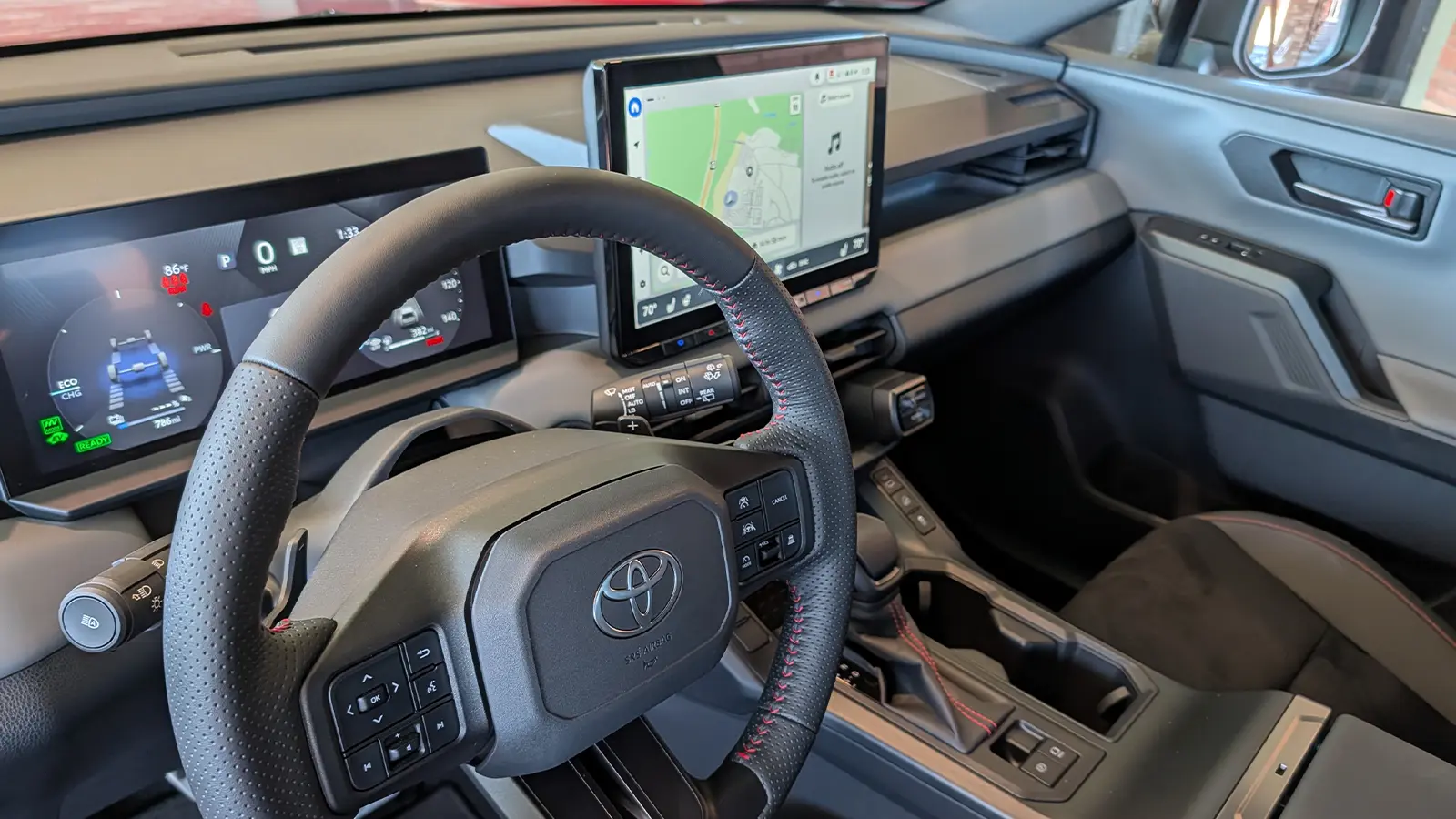
The People Space
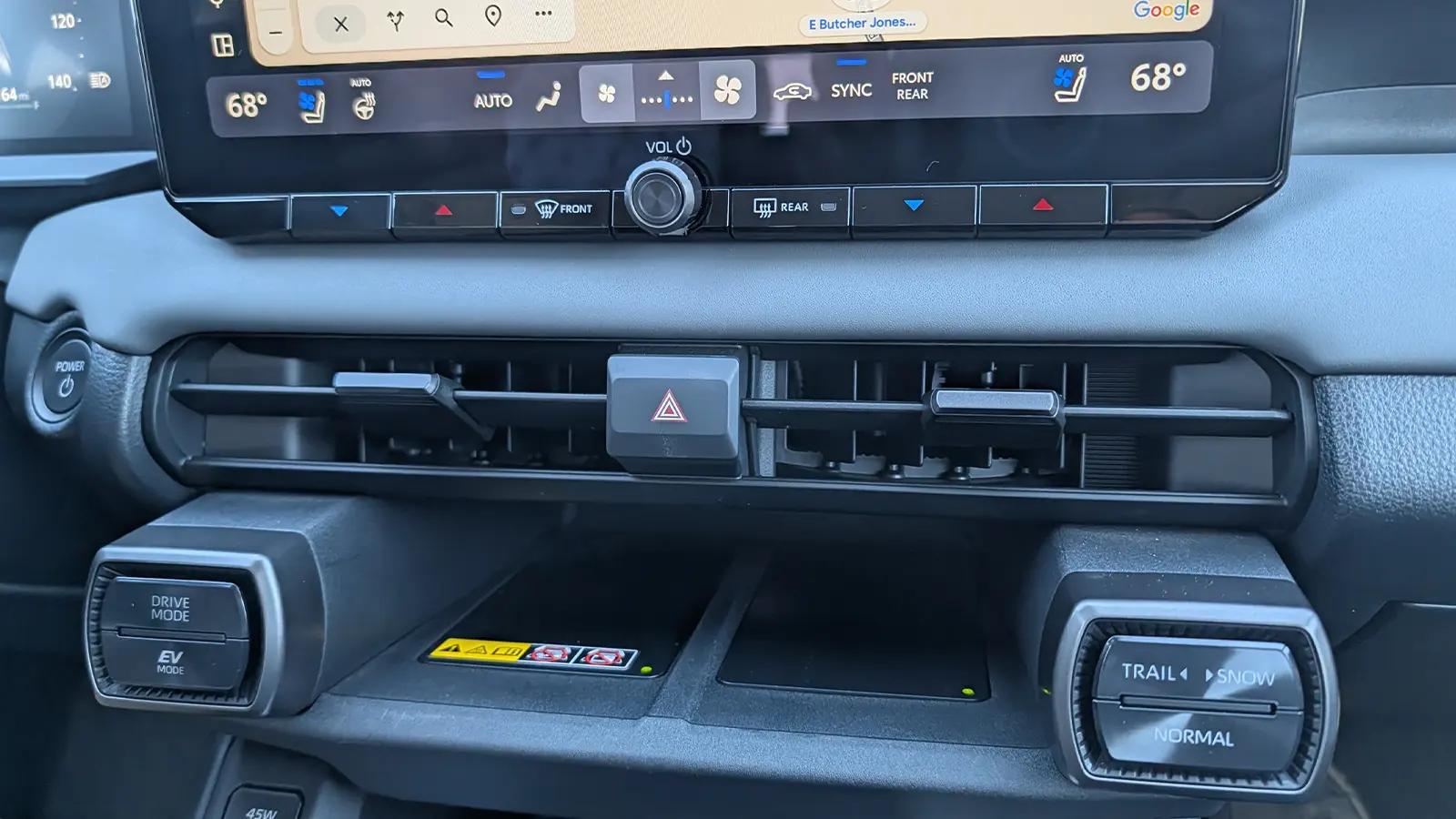
The new RAV4’s cabin offers similar interior volume to its predecessor. That means plenty of room for four adults, and three can go in the back seat as long as they aren’t too broad-shouldered.
The instrument cluster is a standalone 12.3-inch display. To the right, there's a standard 10.5-inch or optional 12.9-inch touchscreen for infotainment. There’s also a head-up display available on the Limited and XSE PHEV. A small volume knob sits centered under the touchscreen, along with physical buttons for temperature and defoggers. Below the manual vents are nice, large buttons for drive modes, EV mode, cameras, and a pair of USB-C ports.
The overall layout is good and everything's accessible. But like many Toyotas, most surfaces are hard plastic that frankly looks a bit cheap. Compared to a similarly priced Mazda CX-5, the Mazda looks far more premium.
New Infotainment Software
The most prominent change inside is the infotainment software. The previous system received complaints about its single window interface, as users could see the navigation map or media player, but not both at the same time.
The new software is based on the Arene software platform from Toyota’s Woven group. The home screens are now customizable, with widgets you can move around so you can have navigation and the media player side by side. There’s also a quick control bar at the top right that you can tap for quick access to a variety of settings, and other screens can pop up to make adjustments and then go away.
Powering Up
Every 2026 RAV4 comes equipped with a 2.5-liter four-cylinder engine and the latest sixth-generation Toyota Hybrid System with two electric motor-generators. The regular hybrid gets a lithium-ion battery with about 1.5 kilowatt hours. The previous generation hybrid was only offered with all-wheel drive, but since there's no gas-only, front-wheel-drive option this year, customers can now choose FWD or AWD hybrids. With FWD, there's 226 horsepower on tap, up from 203 in the gas FWD model before, while the AWD gets 236 horses.
The PHEVs get more powerful electric motors and standard AWD for 324 horsepower, along with a 22.7-kWh battery pack. The PHEVs now get 52 miles of all-electric range, 10 more than last year. With about 80 percent of American drivers going less than 40 miles a day, charging nightly means you'll almost never use gas.
There are two charging setups, depending on trim. The GR Sport and SE PHEVs only have AC charging through a J1772 port at up to 6.6 kilowatts. The XSE and Woodland PHEVs also have a CCS charging port that supports up to 50-kW DC fast-charging as well as 11-kW AC charging.
According to Toyota, they are still experimenting with DC fast charging on PHEVs. Depending on what they learn about how customers charge, they may either expand DC fast charging capability in the future or eliminate it.
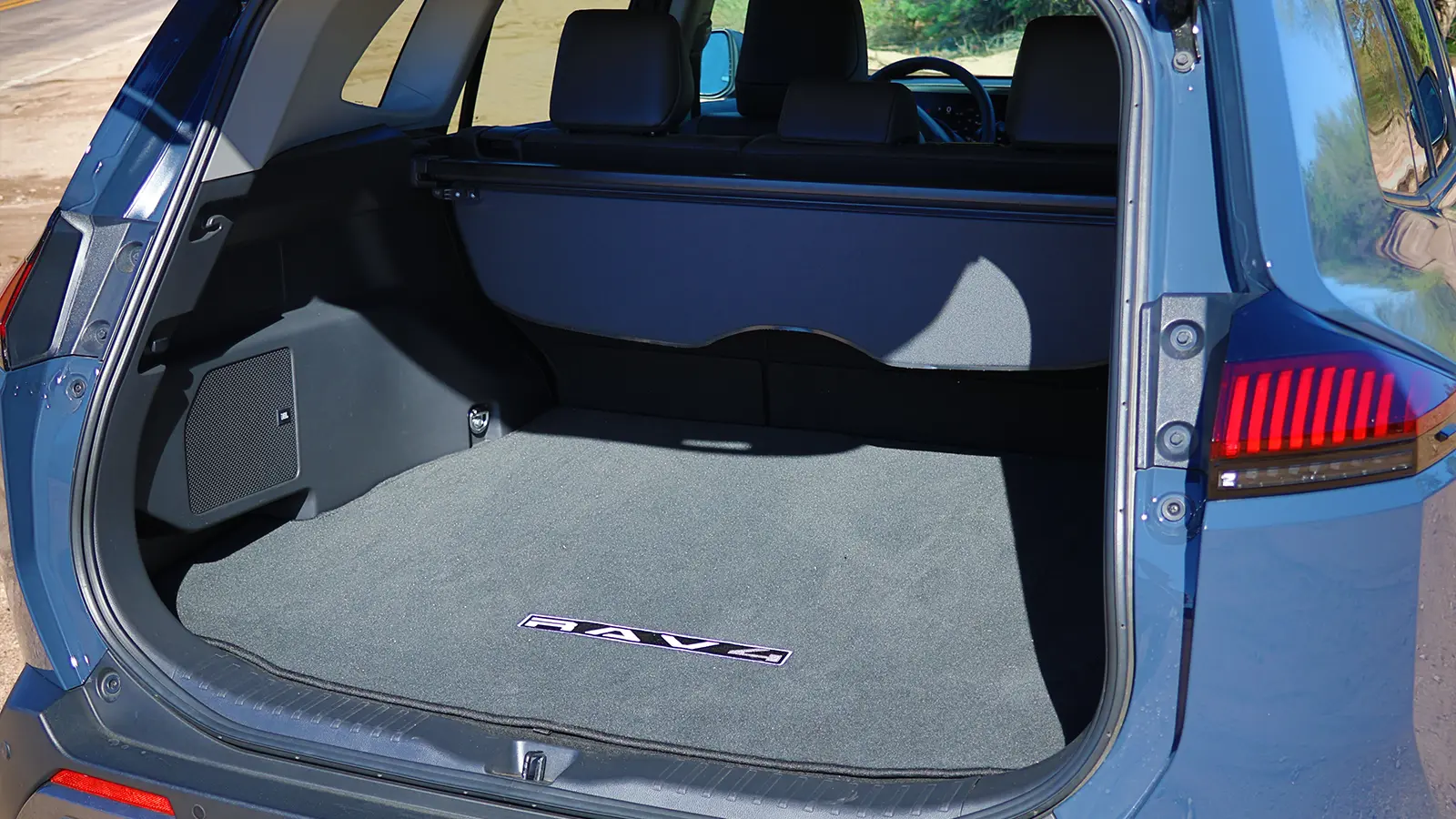
On the Road
We drove several flavors of the RAV4, including the Limited and Woodland hybrids and the GR Sport PHEV. The ride quality and handling were surprisingly good, smooth, and well-controlled across all variants. The GR Sport was particularly impressive and clearly benefited from some additional reinforcement that Toyota made to the structure. Through some curving roads, the steering also felt nicely weighted, and even with 20-inch wheels, there was little road noise.
One area that hasn’t changed on the hybrid is powertrain noise. Toyota hybrids are extremely efficient and reliable, but compared to Honda hybrids, the engines tend to be noisier. The PHEVs are entirely different, though. Given that they'll be driving in electric mode much more often, Toyota probably wanted to keep the noise level more even, so in addition to making the engine block casting stiffer (reducing vibration), there's acoustic dampening that makes it a much more pleasant ride even under full acceleration.
In EV mode, the PHEVs have more than enough thrust to handle daily driving. With the engine unleashed, this is a genuinely quick RAV4. The last generation would get to 60 mph in about 5.5 seconds, and this one feels just as quick.
The RAV4 has about 8 inches of ground clearance, with the Woodland's tires adding about half an inch. That’s fairly modest, but the all-terrain Dunlops combine with a capable traction control system that can send up to 80 percent of torque to the rear wheels, helping it scramble up relatively rough dirt roads. If you want to tackle the Rubicon Trail or Moab, get a 4Runner, but this'll get you to most cabins.
Final fuel economy numbers aren’t available yet, but the 2025 RAV4 AWD hybrid was rated at 39 mpg, so the new model should be at least comparable. The hybrid 2026 RAV4s will hit dealers before the end of the year with prices starting in the low MSRP $30,000 range. The PHEVs should arrive in spring, with pricing still unknown, but the 2025 PHEV started at just under $46,000 MSRP.
* All mileage is EPA estimated.
🌱 Explore More Toyota Hybrid Insights
- 2024 Toyota RAV4 Prime vs 2024 Toyota bZ4X
Toyota’s plug-in hybrid versus its full EV - which one fits your life better.
Read More ➜ - 2025 Toyota Camry Hybrid Road Test
The iconic sedan goes fully hybrid with better economy, quieter performance, and refreshed tech.
Read More ➜ - Hybrid vs Plug-In Hybrid vs Electric
A clear GreenCars 101 guide explaining how hybrid systems differ and which fits your lifestyle best.
Read More ➜





